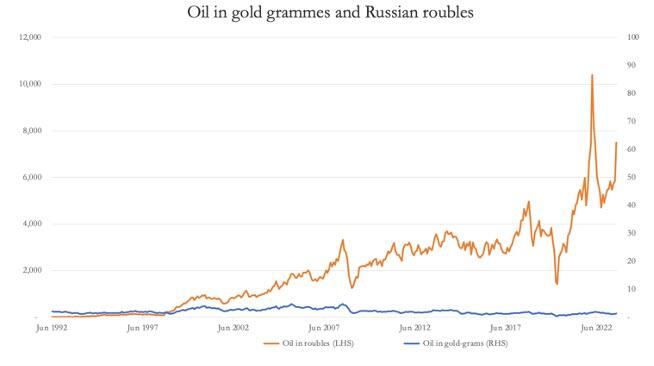The Shifting Sands Of The Chinese Automotive Market: Implications For BMW, Porsche, And Competitors

Table of Contents
The Rise of Domestic Brands
The Chinese automotive market is witnessing a remarkable rise of domestic brands. These manufacturers are no longer simply producing budget-friendly vehicles; they are rapidly innovating and challenging established international players like BMW and Porsche.
Increased Competition from Local Manufacturers
The growth of Chinese automakers such as BYD, Nio, and Xpeng is nothing short of phenomenal. Their success is driven by several factors:
- Competitive Pricing: Domestic brands often offer vehicles with comparable features at significantly lower price points than their international counterparts.
- Technological Advancements: Chinese manufacturers are at the forefront of electric vehicle (EV) technology, autonomous driving capabilities, and advanced driver-assistance systems (ADAS).
- Strong Brand Appeal: These brands are successfully appealing to the preferences and national pride of Chinese consumers.
Examples of successful Chinese EV models include BYD's Han and Tang, Nio's ES8 and ET7, and Xpeng's P7 and G9. These models often boast impressive range, innovative features, and competitive pricing, eating into the market share previously dominated by international brands. Their pricing strategies often undercut established luxury brands, forcing adjustments in pricing and marketing strategies. Government subsidies and support for domestic EV manufacturers further contribute to their competitive edge.
Impact on Premium Brands
The success of domestic brands is significantly impacting premium brands like BMW and Porsche. These established players are facing increased pressure to adapt and innovate to maintain their market share.
- BMW and Porsche are responding with localized product development, tailoring vehicles to meet the specific preferences of the Chinese market.
- They are also investing heavily in electric vehicle technology and expanding their EV offerings.
- However, maintaining premium pricing in the face of fierce competition from domestic brands presents a major challenge.
Examples of BMW's and Porsche's strategies include localized marketing campaigns, the development of electric models specifically for the Chinese market (like the iX3 and Taycan), and the creation of joint ventures to leverage local expertise. Maintaining their premium positioning while dealing with price-sensitive consumers remains a significant hurdle.
The Electrification Revolution
China is leading the global charge towards electric vehicles. The demand for EVs is soaring, driven by government initiatives and a growing awareness of environmental concerns among consumers.
Growing Demand for Electric Vehicles (EVs)
The Chinese government's commitment to electrification is undeniable. Significant investments are being made in charging infrastructure and subsidies are offered to encourage EV adoption.
- EV sales in China are experiencing exponential growth, year over year.
- Government incentives, such as tax breaks and purchase subsidies, are driving demand.
- Extensive investments in charging infrastructure are making EV ownership more practical.
Statistics show a dramatic increase in EV sales in China compared to internal combustion engine (ICE) vehicles. This trend shows no signs of slowing down. The government's "New Energy Vehicle" (NEV) policy plays a critical role in this rapid growth.
Challenges and Opportunities for International Automakers
The rapid growth of the EV market presents both significant challenges and opportunities for international automakers.
- Supply chain issues related to battery production and critical minerals are a major concern.
- Technological hurdles in developing competitive EV technology remain.
- Competition from technologically advanced and well-funded Chinese EV manufacturers is fierce.
However, the early adoption of EV technology in China presents a significant opportunity for international brands to gain a foothold in this rapidly expanding market. Success will depend on building strong supply chains, developing innovative EV models, and adapting to the unique features of the Chinese EV market. The development of robust battery technology and suitable charging infrastructure is crucial for international players.
Changing Consumer Preferences
The preferences of Chinese consumers are evolving rapidly. Technology and innovation are no longer just desirable features; they are key purchase drivers.
Focus on Technology and Innovation
Chinese consumers show a strong preference for vehicles equipped with advanced technology features.
- Autonomous driving capabilities are highly sought after.
- Connectivity features and digital cockpits are crucial selling points.
- Sophisticated infotainment systems are expected as standard.
Examples of highly desired features include advanced driver-assistance systems (ADAS), large touchscreens, over-the-air software updates, and seamless smartphone integration. The importance of a user-friendly and technologically advanced experience cannot be overstated.
Impact on Brand Loyalty and Marketing
Changing consumer preferences are impacting traditional notions of brand loyalty. Marketing strategies must be tailored to resonate with the tech-savvy and discerning Chinese consumer.
- Traditional advertising is losing its effectiveness.
- Digital marketing and online sales channels are paramount.
- Social media and influencer marketing play a crucial role in shaping consumer perception.
Successful marketing campaigns often leverage social media platforms, utilize online influencer marketing, and focus on showcasing technological advancements and innovative features. Understanding the nuances of Chinese digital culture and social media is critical.
Conclusion
The Chinese automotive market is undeniably dynamic and complex. The rise of domestic brands, the rapid adoption of electric vehicles, and the evolving preferences of consumers are reshaping the competitive landscape. For BMW, Porsche, and other international players, success hinges on adapting to these changes through strategic innovation, localization efforts, and a deep understanding of the Chinese market. Ignoring these shifts in the Chinese automotive market could lead to significant losses; embracing them presents opportunities for substantial growth. Therefore, continuous monitoring and adaptation are vital for navigating the shifting sands of the Chinese automotive market and securing a future in this crucial sector. Understanding and responding to the trends within the Chinese automotive market is no longer optional; it's essential for survival and success.

Featured Posts
-
 The Karen Read Trials Key Dates And Events
Apr 26, 2025
The Karen Read Trials Key Dates And Events
Apr 26, 2025 -
 Colgates Financial Results Tariffs Drive 200 Million Cost Increase
Apr 26, 2025
Colgates Financial Results Tariffs Drive 200 Million Cost Increase
Apr 26, 2025 -
 A Side Hustle Access To Elon Musks Private Companies
Apr 26, 2025
A Side Hustle Access To Elon Musks Private Companies
Apr 26, 2025 -
 Dow Futures Chinas Economy And Todays Stock Market Trends
Apr 26, 2025
Dow Futures Chinas Economy And Todays Stock Market Trends
Apr 26, 2025 -
 Is Gold A Safe Investment During Trade Wars Analyzing Bullions Performance
Apr 26, 2025
Is Gold A Safe Investment During Trade Wars Analyzing Bullions Performance
Apr 26, 2025
